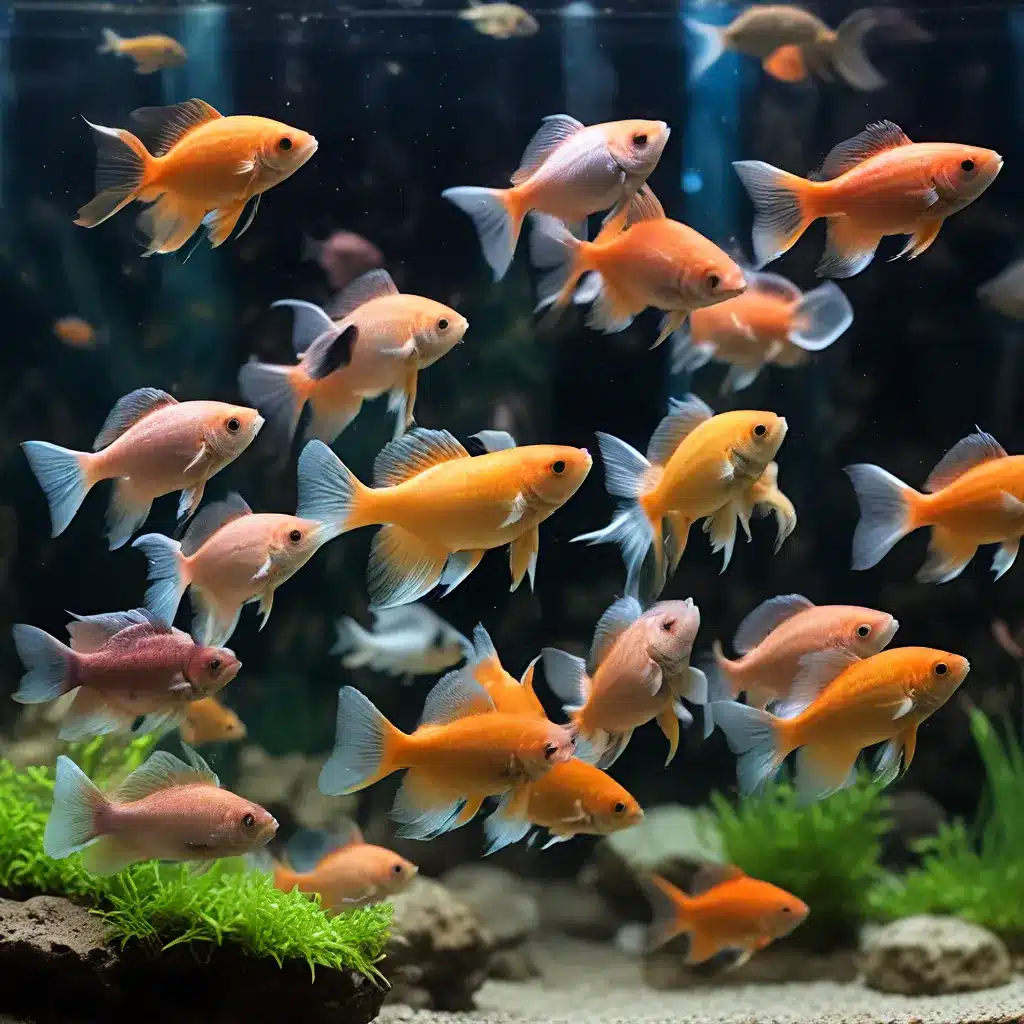
Understanding Fish Personality and Social Dynamics
Aquarium enthusiasts often marvel at the captivating behaviors exhibited by their underwater denizens. From the vibrant schooling patterns of tetras to the inquisitive exploration of dwarf cichlids, each species possesses a unique personality that can greatly enhance the enjoyment and appreciation of an aquatic environment. By delving into the complex world of fish behavior, aquarists can gain invaluable insights that inform their aquascaping choices, feeding regimes, and overall tank management.
One of the most fascinating aspects of fish behavior is their social dynamics. Many species are highly social, forming intricate hierarchies and engaging in a variety of interactions, from cooperative hunting to aggressive territorial displays. Understanding these social structures can help aquarists create harmonious tank communities, prevent aggression, and foster thriving ecosystems.
For instance, schooling fish, such as neon tetras or cardinal tetras, exhibit a remarkable level of coordination and cohesion within their groups. These fish rely on their shoalmates for safety, foraging efficiency, and even social cues. By mimicking the natural schooling behavior of these species in the aquarium, aquarists can create visually stunning displays while also meeting the species’ social needs.
In contrast, territorial fish, like many species of cichlids, are known for their assertive behavior and the establishment of dominance hierarchies. Understanding the nuances of territorial fish behavior, such as their preferred hiding spots, feeding patterns, and interaction dynamics, can help aquarists manage potential conflicts and create a harmonious environment for these captivating species.
Exploring the Sensory Capabilities of Aquarium Fish
Beyond social dynamics, fish also possess a range of sensory abilities that shape their behavior and perception of the aquatic world. These sensory adaptations are often highly specialized, allowing fish to thrive in their respective environments.
One of the most remarkable senses found in many fish species is their lateral line system, which enables them to detect water movements and vibrations. This sensitivity to their surroundings allows fish to navigate their environment, locate prey, and even communicate with one another through subtle movements and vibrations.
Another fascinating sensory capability in fish is their color vision. Many species, such as cichlids and reef-dwelling fish, have the ability to perceive a broader spectrum of colors than humans, allowing them to engage in complex visual communication and even recognize individual tankmates.
Understanding these sensory adaptations can inform aquarists’ choices in lighting, décor, and overall aquascape design, ensuring that the environment caters to the specific needs and preferences of the fish inhabitants.
Interpreting Fish Behavior for Optimal Care
Observing and interpreting fish behavior is not only a captivating hobby but also a crucial aspect of providing excellent aquarium care. By understanding the unique behavioral patterns of different fish species, aquarists can make more informed decisions regarding tank setup, feeding, and overall management.
For instance, aggressive fish may require more robust hiding spots, territoriality-mitigating décor, and carefully planned tank mates to prevent conflicts and ensure the well-being of the entire community. Conversely, timid or shy fish may benefit from a more densely planted aquascape, with ample hiding places and low-stress feeding regimes to help them thrive.
Moreover, close observation of fish behavior can provide valuable insights into the overall health and well-being of the aquarium inhabitants. Changes in feeding patterns, activity levels, or social interactions can serve as early indicators of potential issues, enabling aquarists to address problems proactively and maintain a thriving, balanced ecosystem.
By delving into the complex and mesmerizing world of fish behavior, aquarium enthusiasts can unlock a deeper understanding of their aquatic companions, leading to more fulfilling and successful aquarium keeping experiences.
Harnessing Behavior for Aquascaping and Water Management
The application of fish behavior knowledge extends beyond just maintaining healthy fish communities. Astute aquarists can also leverage their understanding of fish behavior to enhance the aesthetic appeal and functionality of their aquascapes.
For example, the schooling behavior of certain fish species can be used to create visually stunning focal points within the aquarium, where the synchronized movements of these fish create a captivating dance of color and energy. Carefully planning the placement and composition of these schooling fish can elevate the overall aquascape design.
Similarly, the territorial and foraging behaviors of other fish species can be harnessed to maintain a balanced and thriving aquatic ecosystem. Certain fish, such as bottom-dwelling algae eaters, can be strategically placed to manage algae growth and maintain water quality, while more active predatory fish can help control populations of smaller inhabitants, promoting a natural balance.
By understanding the complex interplay between fish behavior, aquascape design, and water management, aquarists can create visually striking and ecologically sustainable aquarium environments that inspire awe and wonder.
Conclusion: Embracing the Richness of Fish Behavior
The aquarium hobby is a captivating and ever-evolving pursuit, where the exploration of fish behavior can unlock new levels of appreciation and success. By delving into the fascinating world of aquatic creatures, aquarists can cultivate a deeper understanding of their underwater companions, optimize their aquarium setups, and foster thriving, harmonious ecosystems.
Whether it’s marveling at the mesmerizing schooling patterns of tetras, unraveling the complex social dynamics of cichlids, or harnessing the cleaning prowess of algae eaters, the study of fish behavior offers a wealth of insights and opportunities for aquarium enthusiasts.
By embracing the richness of fish behavior, aquarists can embark on a journey of discovery, unlock new levels of aquascaping artistry, and ultimately create aquarium environments that are not only visually stunning but also serve as vibrant, living microcosms of the natural world.

